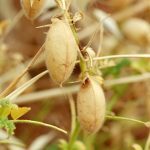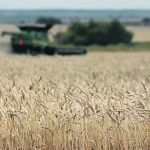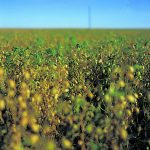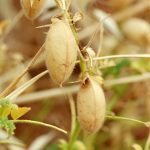Industry official wonders if the expansion of pulse processing that has been seen in Western Canada is outpacing demand
WINNIPEG — Every year, food companies in the United States, the United Kingdom, Europe and Asia launch thousands of new products. Peas, lentils, pea protein and chickpea flour made from pulse crops grown in Western Canada are becoming common ingredients in those novel foods. In 2023, for instance, more than 1,200 products from around the […] Read more
Chickpea acres prepare to mount a comeback
With harvest in the home stretch in southern regions, thoughts turn to cropping plans for next year. In the typically drier brown and dark brown soil zones, more chickpeas will be seeded next spring. Chickpeas don’t get a lot of attention because they aren’t a widespread cropping choice. The Saskatchewan Crop Insurance Corp. will only […] Read more

Producer profitability wanes in the grain sector
Each year, every farm has successes and failures and grain prices always fluctuate, but the good times appear to be waning. We each play the hand we’re dealt and spend most of our time looking forward rather than back, but in most cases, profitability has eroded quite dramatically over the past several years. Perhaps some […] Read more

Chickpeas could help make or break pea market
Canadian pea exports to India soar when the country is short of desi chickpeas, and Australia is looking at a bumper crop SASKATOON — The yellow pea market hinges on one key factor this year, says an analyst.“The outlook is 80 per cent political, 20 per cent fundamental,” said Greg Kostal, president of Kostal Ag […] Read more

Canadian producers have new option for selling pulses
WINNIPEG — Yet another company wants to buy pulse crops from Canadian farmers and sell them to the world. Sadot Group, a firm with headquarters in Fort Worth, Texas, announced this summer that it’s creating a subsidiary in Toronto called Sadot Canada. In a news release from July unveiling the new division, Sadot Canada said […] Read more

Wealth of chickpeas will affect export market
SASKATOON — The United States could be sitting on a massive stockpile of kabuli chickpeas by the end of the 2024-25 crop year, says an analyst. Farmers in that country planted 529,900 acres of chickpeas, a 42 percent increase over the previous year, according to the USDA’s Farm Service Agency. Related stories: The breakdown by […] Read more

Innovation in intercropping saves time
Infield separator allows crops to be sorted before leaving the field to simplify both on-farm storage and sales
MIDALE, Sask. — The long winter’s work of separating mixed crops is getting easier on Rosengren Farms. Colin Rosengren has been intercropping for 20 years and staff used to spend months cleaning and separating grain after harvest. So, he designed and built an infield separating system to do exactly what it says: separate each crop […] Read more
Sask. crop trials focus on intercrops, humic acid
The South East Research Farm continues its chickpea-flax work and is trying to determine the facts on humic acid
Glacier FarmMedia – The next round of trials and intercrop mixes are in the ground at the South East Research Farm in Redvers, Sask. Lana Shaw, research manager at SERF, has a few projects she deems particularly noteworthy, among them tests of humic acid application with nitrogen fertilizer. Winter and spring camelina genetic mixes are […] Read more
Many stories are behind seeded acreage stats
There weren’t a lot of surprises in the June 27 seeded acreage report from Statistics Canada. However, the decisions behind what producers plant as well as the long-term acreage trends are intriguing. StatCan seeded acreages for most crops were not too far from grain trade expectations. One exception may have been barley, down nearly 13 […] Read more

Chickpeas galore in Australia could impact yellow pea prospects
SASKATOON — Australia’s desi chickpeas could provide stiff competition for Canada’s yellow peas in India this year. Farmers Down Under could be harvesting a massive crop based on early-season expectations. Related stories: The Australian Bureau of Agricultural and Resource Economics and Sciences (ABARES) is forecasting 1.15 million tonnes of chickpea production in 2024-25. That would […] Read more






